The power of storytelling shone through at the Tasveer Film Festival, a key player and pivotal stakeholder in the global South Asian film market. Since its inception in 2002, the festival has consistently amplified South Asian narratives and boosted their visibility on the world stage.
“When you think of a Hollywood action movie, you think of Arnold Schwarzenegger, Slyvester Stallone. I want this movie to change that,” says Vish Iyer, a buff, tenacious dreamer who looks like a real-life superhero.
Speaking at the North American premiere of his film at the Tasveer South Asia Film Festival in Seattle last month, Iyer said its name, ‘American Underdog’, would have to be changed – there’s an earlier film out there by the same name, causing confusion.
So, by the time the film made its Asian premiere at the International Film Festival of India, Goa, on 24 November, the title had morphed into ‘American Warrior’. The inspiring redemption story remains the same. And Iyer wants his Hollywood action movie, that he plays the lead in, to have the kind of impact on audiences that ‘Rocky’ had – but with an Indian actor.
The action-packed drama debuted in Asia on Sunday, November 24, at the 55th International Film Festival of India (IFFI) in Goa — which is considered as the Cannes Festival of India. Directed by Peruvian-American filmmaker Gustavo Martin Benites, the movie includes big names like Danny Trejo and was filmed in just 20 days. It will be released in theatres in Spring 2025.
Impacting brown community positively
Iyer began working on the project a decade ago when he first wrote the story, featuring an Indian-American immigrant and amateur mixed martial arts fighter who redeems and rebuilds his life to become a better man.
In a way, the story mirrors Iyer’s own struggles. He talks about losing everything due to his own misjudgments that he is quick to own responsibility for, and how he built his life up again from scratch, supported by his wife Deypika Singh-Iyer.
The broader goal of the film is to impact the brown community positively. There are “two billion of us”, says Iyer, “and we hardly have any say in the world. If this movie succeeds, all brown people succeed.”
Tasveer has played a pivotal role in providing a platform for films like Iyer’s. This year, the festival launched North America’s first global film market dedicated to South Asian filmmakers. It is also the only Oscar-qualifying South Asian film festival worldwide for the short film genre.
Being at Tasveer felt like being part of a parallel world – a euphoric, colorful world. Vibrant outfits, beautiful faces, happy people embracing each other’s wins, and taking pride in their creative work.
Tasveer has created a safe space for South Asian creatives to come together, particularly those from India and Pakistan who could not meet, mingle, or work together in their own countries. These meetings led to camaraderie and collaboration. Through this platform, Wakhri, for example, now has Deepa Mehta on board as a producer.
Some vignettes: Mumbai actor Priyanka Zemse dazzling the red carpet with a flowy silk dress and a beaming smile, hugging a filmmaker and lauding his production. London-based Kamran Anwar’s strong presence and passionate voice, painting a picture of the roots of Qawwali, a musical genre popular across the region. From Karachi, Abid Aziz Merchant in a bright pink kurta, discussing his bold film inspired by the life and legacy of a social media star in Pakistan who met a tragic end.
Amidst grim politics, rainy and gray Seattle, here was a room full of brilliant minds, a dynamic South Asian and diaspora community of filmmakers and their supporters who dare to dream and tenaciously make their dreams come true by making impactful films.
“As actors, we pour so much of ourselves into each role, and seeing that work come to life in front of an engaged audience was incredible” exclaimed Priyanka Zemse after watching the feature ‘Me, Raani’ that she stars in. The film won the 2024 Best of India Short Film Festival in Mumbai.
Her performance as Anju, a single mother working as a maid with a relentless commitment to educating her daughter, Raani, is vulnerable and raw. Anju dreams of the marble-playing Raani becoming an engineer in a patriarchal society where the future of girls is all-too-often a child marriage.
Reshaping financial and distribution models
The Tasveer Film Festival is designed to reshape financial and distribution models for South Asian filmmakers globally by hosting events, industry panels, and networking sessions. With a rich legacy spanning two decades, Tasveer proactively promotes diversity, inclusion, and representation in art.
Winners of Best Feature Film were ‘Wakhri’, screened at the opening night along with the thought provoking and innovative animated Marathi short ‘Loop Line’; best narrative feature ‘A Nice Indian Boy’; and best social justice film was ‘A Lullaby for Yellow Roses.’ The complete list of this year’s winners is here.
Read more at: https://www.southasiamonitor.org/south-asia-abroad/amplifying-south-asian-narratives-empowering-regions-filmmakers
At the post-screening discussion of ‘A Nice Indian Boy’, a groundbreaking Hollywood-meets-Bollywood rom-com starring a cross-cultural same-sex couple, director Roshan Sethi – who also happens to be a physician affiliated with Harvard University – shared how difficult it was to finance the film. It was only when Jonathan Groff, the Caucasian lead actor accepted the role opposite Indian origin Karan Soni – Sethi’s real-life spouse – that investors began taking the production seriously.
There were so many winning entries, even if they didn’t win an award. Particularly moving is ‘Paper Flowers’ based on the true story of Shalin, an Indian-origin student who graduates from the University of Southern California, committed to his Taiwanese-origin girlfriend, Fiona (Frances) Chang – a cross-racial relationship the film delicately depicts.
Shalin is diagnosed with cancer shortly after joining the US Peace Corps in Peru. We already know the tragic outcome so it’s poignant to see the lead character celebrate life, cherish every moment and every sunset.
“I was so moved by Shalin’s story, and I wanted to capture the message of positivity behind it. I am so grateful to Shalin’s and Frances’ families for supporting us through the journey, which helped capture and portray the story authentically,” director Mahesh Pailoor told Sapan News after the screening.
The portrayal of their parents’ hesitations about the couple’s cross-cultural relationship initially faced some pushback, revealed the film’s producer Asit Vyas. However, they came around to it and are happy with how it was made.
Another outstanding film is Kamran Anwar’s documentary ‘Songs of the Sufi’ which covers the history, culture, etiquette, and roots of Qawwal. His interest stems from the roots of his family’s history as supporters of Qawwal families in Hyderabad, India for seven generations.
Anwar’s film traces the roots of Qawwali, how it evolved, and what it symbolizes. He also wanted to inspire the next generation to be curious about the genre and respect it.
Abid Aziz Merchant, one of the producers of ‘Wakhri’, inspired by the life of Pakistani social media star Qandeel Baloch, is focusing on distribution. The team is delighted to have the well known filmmaker Deepa Mehta on board as executive producer. With her name on the credits, they hope to “get a streaming platform where the world can watch it”, Merchant told Sapan News.
The film, yet to be released in Pakistan, has been screened in 17 festivals, including Tasveer. It is also being premiered in India and Barcelona. One of its highlights is the stirring music by well-known names like composer Abdullah Siddiqi and singers Ali Sethi, Resham Faiz Bhutta, and Meesha Shafi. The soundtrack is available on Spotify.
Extrajudicial killings in Bangladesh
Tasveer also platformed bold directorial debuts like the short ‘Not a Fiction’ (4.5 min) by Shah Newaz Khan Cju, an independent filmmaker in Dhaka, Bangladesh. In less than five minutes, the director relays a powerful message from the perspective of a silent onlooker, an old tree. Due to lack of funds, he couldn’t travel to the festival but told Sapan News via email about his one-shot film on extrajudicial killings in Bangladesh. It took him three years to make.
Bangladesh’s Rapid Action Battalion and other law enforcement agencies are responsible for more than 600 extrajudicial killings since 2018, according to Human Rights Watch. Dedicated to victims all over the world, ‘Not a Fiction’ depicts one such incident, a composite of many stories.
Since its world premiere at the 18th Hamilton Film Festival in Ontario in 2023, where it qualified for the Canadian Screen Awards, the documentary has been screened at several festivals.
Following its success in Oscar-qualifying festivals, such as its U.S. premiere at the 33rd Cinequest Film and Creativity Festival, San Jose, CA, and the 19th Tasveer Film Festival, ‘Not a Fiction’ has been picked for the ‘Land, Peace, and Justice’ section of the Middle East’s Oscar-qualifying festival, the 18th Beirut Shorts International Film Festival 2024, held from November 26 to 30, 2024.
Bangladesh’s Rapid Action Battalion and other law enforcement agencies are responsible for more than 600 extrajudicial killings since 2018, according to Human Rights Watch.
The film will premiere in its home country at the Bangladesh Film Archive Centre on 5 December 2024, organized by the Film Archive. Another screening is planned for Dhaka premiere in January 2025 at the American Center, the U.S. Embassy’s Public Diplomacy Section.
The power of storytelling shone through at the Tasveer Film Festival, a key player and pivotal stakeholder in the global South Asian film market. Since its inception in 2002, the festival has consistently amplified South Asian narratives and boosted their visibility on the world stage.
If Vish Iyer’s dream comes true and his film becomes the first Hollywood blockbuster with a South Asian lead, and if the LGBTQ rom-com ‘A Nice Indian Boy’ does well at the box office, perhaps we will see a day when investors are willing to finance such films.
(The author is a journalist, global strategist and founder of MTG, a Seattle-based media outlet and production house that aims to elevate and amplify BIPOC and immigrant narratives and perspectives. Twitter: @MaheenM. By special arrangement with Sapan)




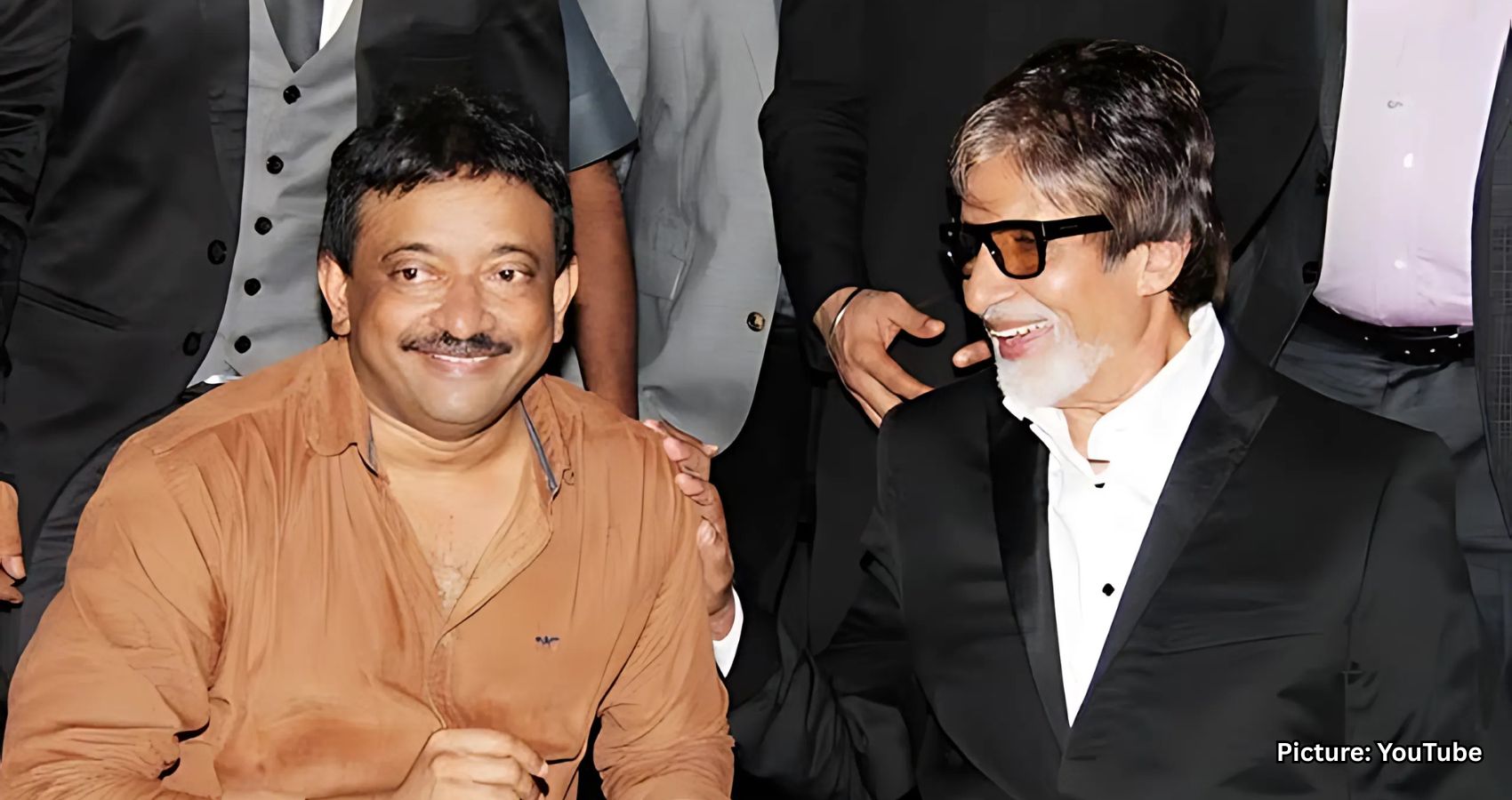

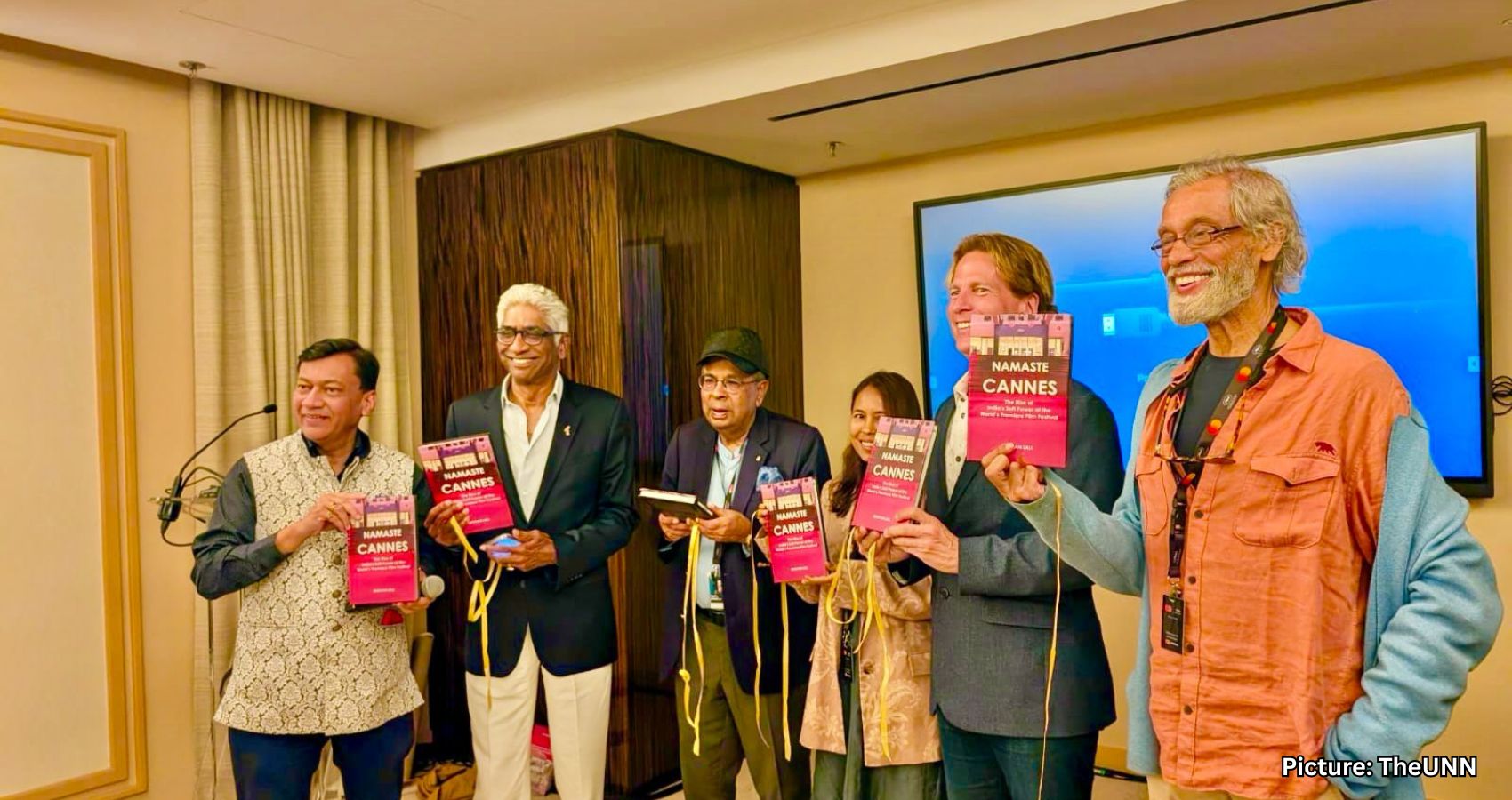
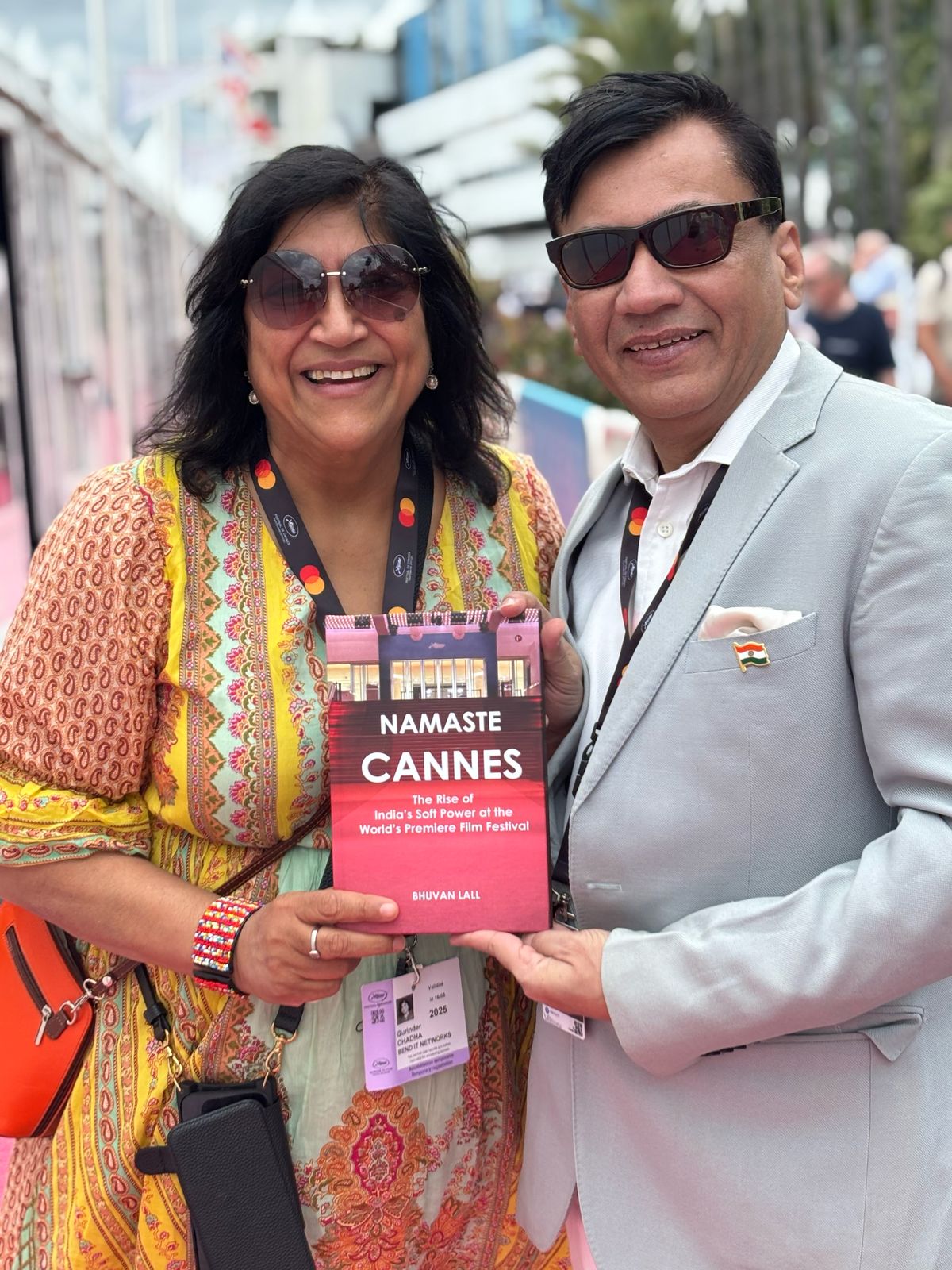 The book launch garnered widespread attention and praise, underscoring the impact of India’s cultural footprint at one of the world’s most prestigious film festivals. Among the many distinguished guests attending the event were acclaimed figures from across the globe, including legendary Hollywood producer Ashok Amritraj, billionaire industrialist Prakash Hinduja, William Pfeiffer, Chairman of Global Gate, celebrated art historian Sundaram Tagore, and a range of internationally renowned filmmakers such as Gurinder Chaddha, Rima Das, Sudhir Misra, Pan Nalin, Deepak Tijori, and Vijay Singh. Together with leading personalities from both Indian and global cinema, they came together in a show of solidarity and celebration of India’s cultural ascent.
The book launch garnered widespread attention and praise, underscoring the impact of India’s cultural footprint at one of the world’s most prestigious film festivals. Among the many distinguished guests attending the event were acclaimed figures from across the globe, including legendary Hollywood producer Ashok Amritraj, billionaire industrialist Prakash Hinduja, William Pfeiffer, Chairman of Global Gate, celebrated art historian Sundaram Tagore, and a range of internationally renowned filmmakers such as Gurinder Chaddha, Rima Das, Sudhir Misra, Pan Nalin, Deepak Tijori, and Vijay Singh. Together with leading personalities from both Indian and global cinema, they came together in a show of solidarity and celebration of India’s cultural ascent.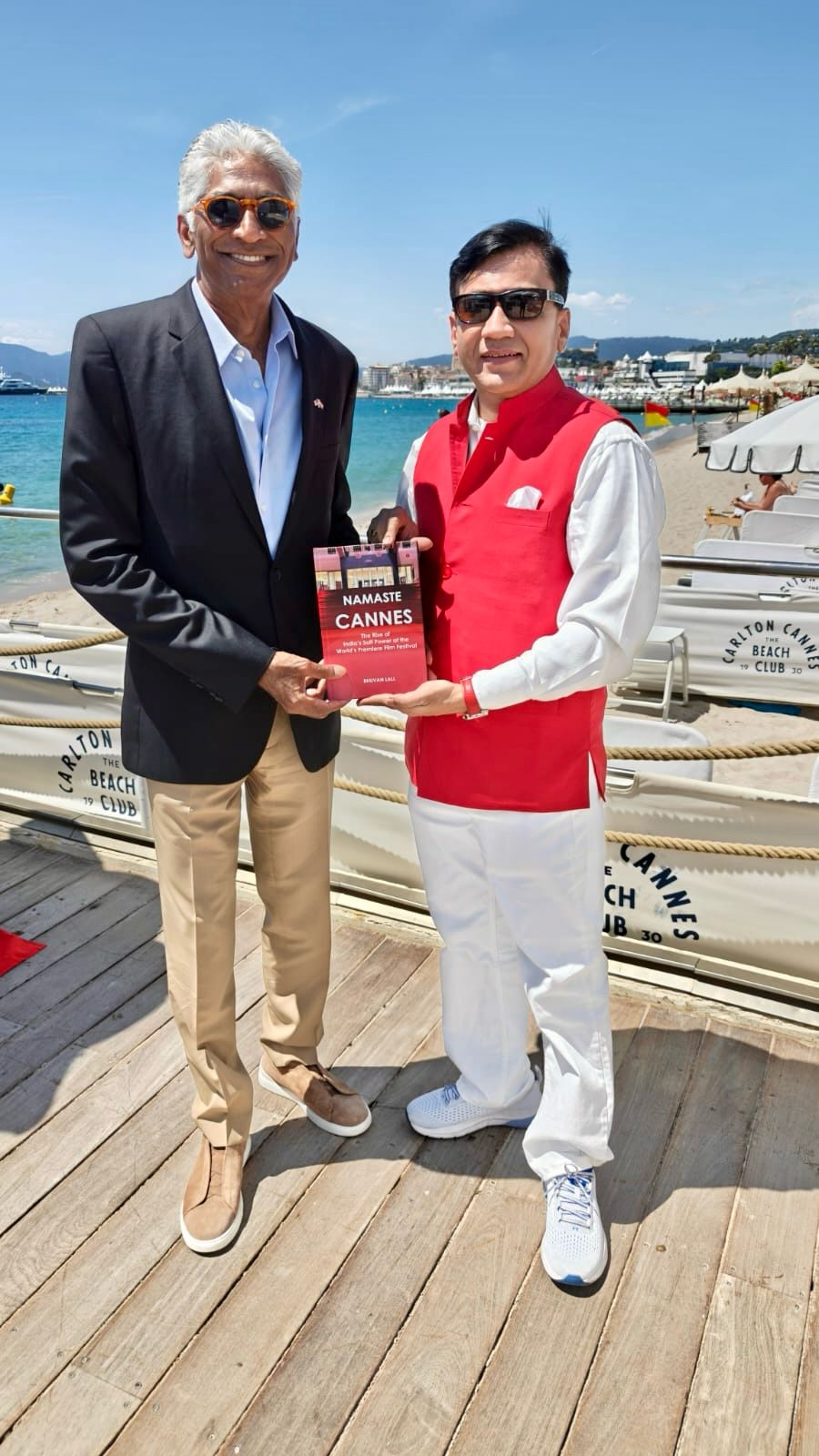 influencer. Bhuvan Lall, clearly moved by the moment, shared his personal reflections on the launch and his decades-long association with Cannes. “Cannes 2025 has been a dream come true, both for my journey of 3 decades at the festival and the launch of Namaste Cannes. I’m honored to share this story of India’s soft power with the world,” he said.
influencer. Bhuvan Lall, clearly moved by the moment, shared his personal reflections on the launch and his decades-long association with Cannes. “Cannes 2025 has been a dream come true, both for my journey of 3 decades at the festival and the launch of Namaste Cannes. I’m honored to share this story of India’s soft power with the world,” he said. The selection of Cannes as the venue for this launch was deeply symbolic. As one of the most celebrated film festivals in the world, Cannes has long been a benchmark for cinematic excellence. Holding the book launch here sent a powerful message about how far India has come in terms of artistic recognition and global outreach. For Bhuvan Lall, whose own relationship with the festival spans over thirty years, it was a moment of deep personal and professional fulfillment.
The selection of Cannes as the venue for this launch was deeply symbolic. As one of the most celebrated film festivals in the world, Cannes has long been a benchmark for cinematic excellence. Holding the book launch here sent a powerful message about how far India has come in terms of artistic recognition and global outreach. For Bhuvan Lall, whose own relationship with the festival spans over thirty years, it was a moment of deep personal and professional fulfillment.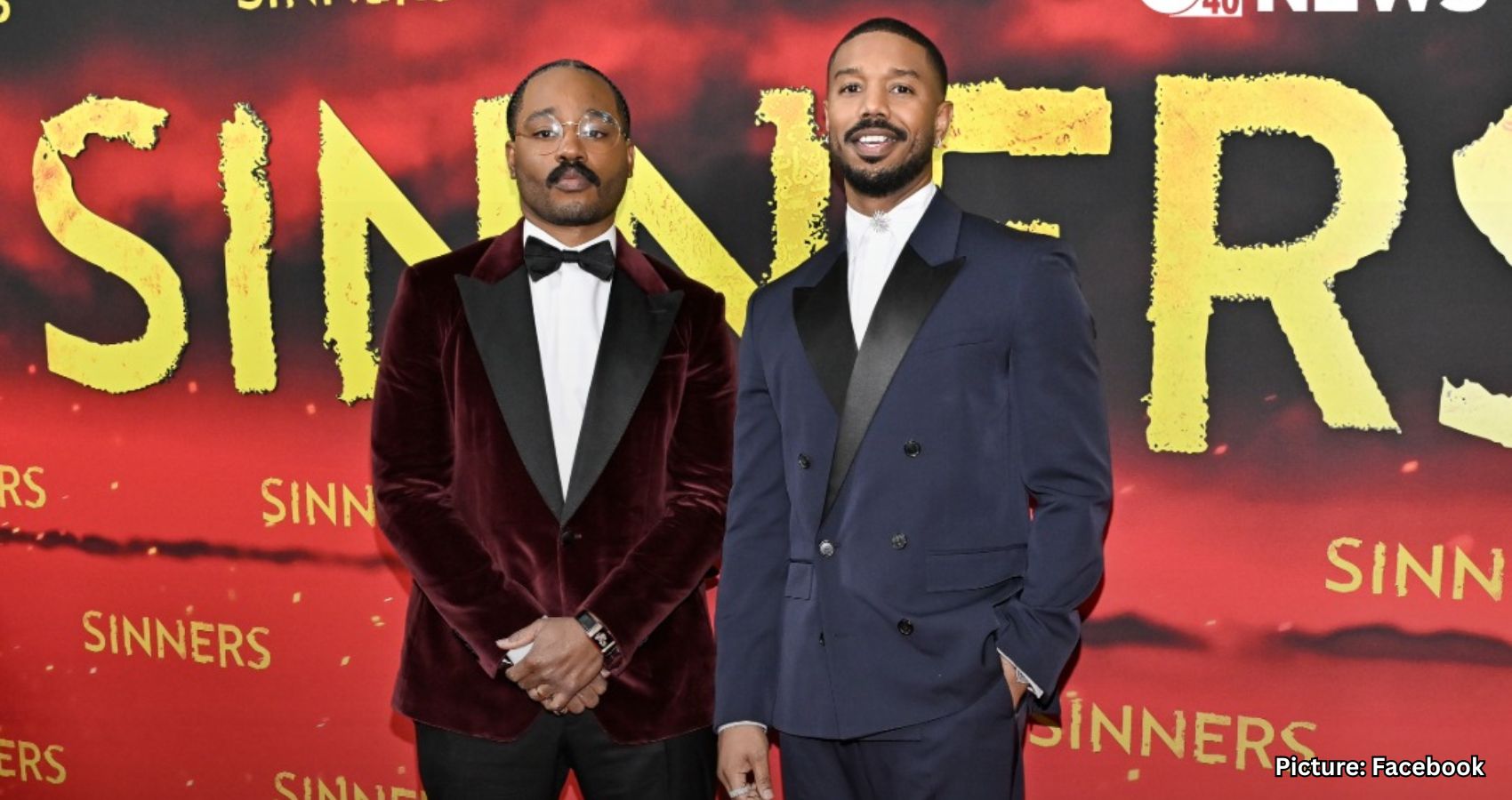
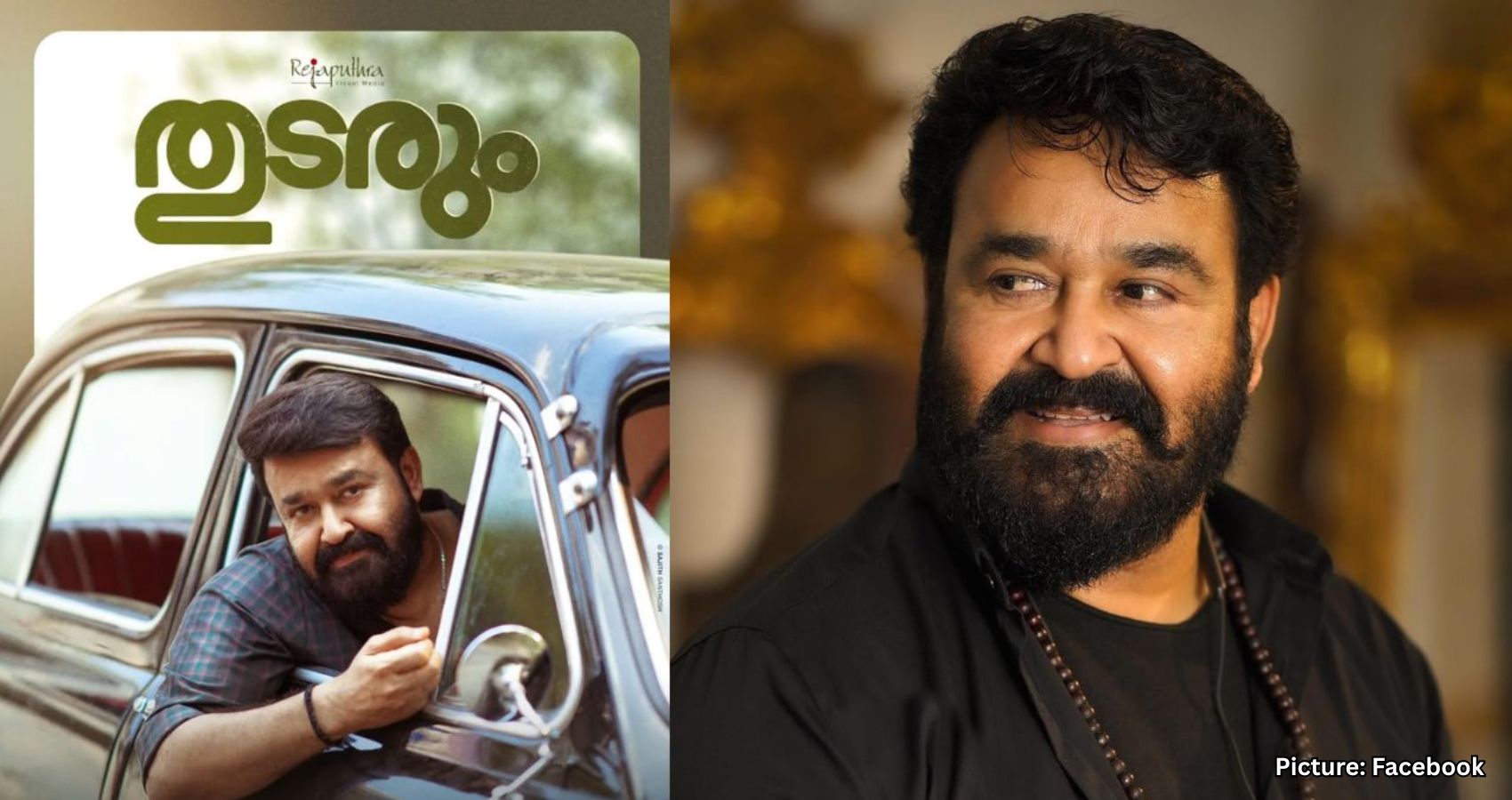

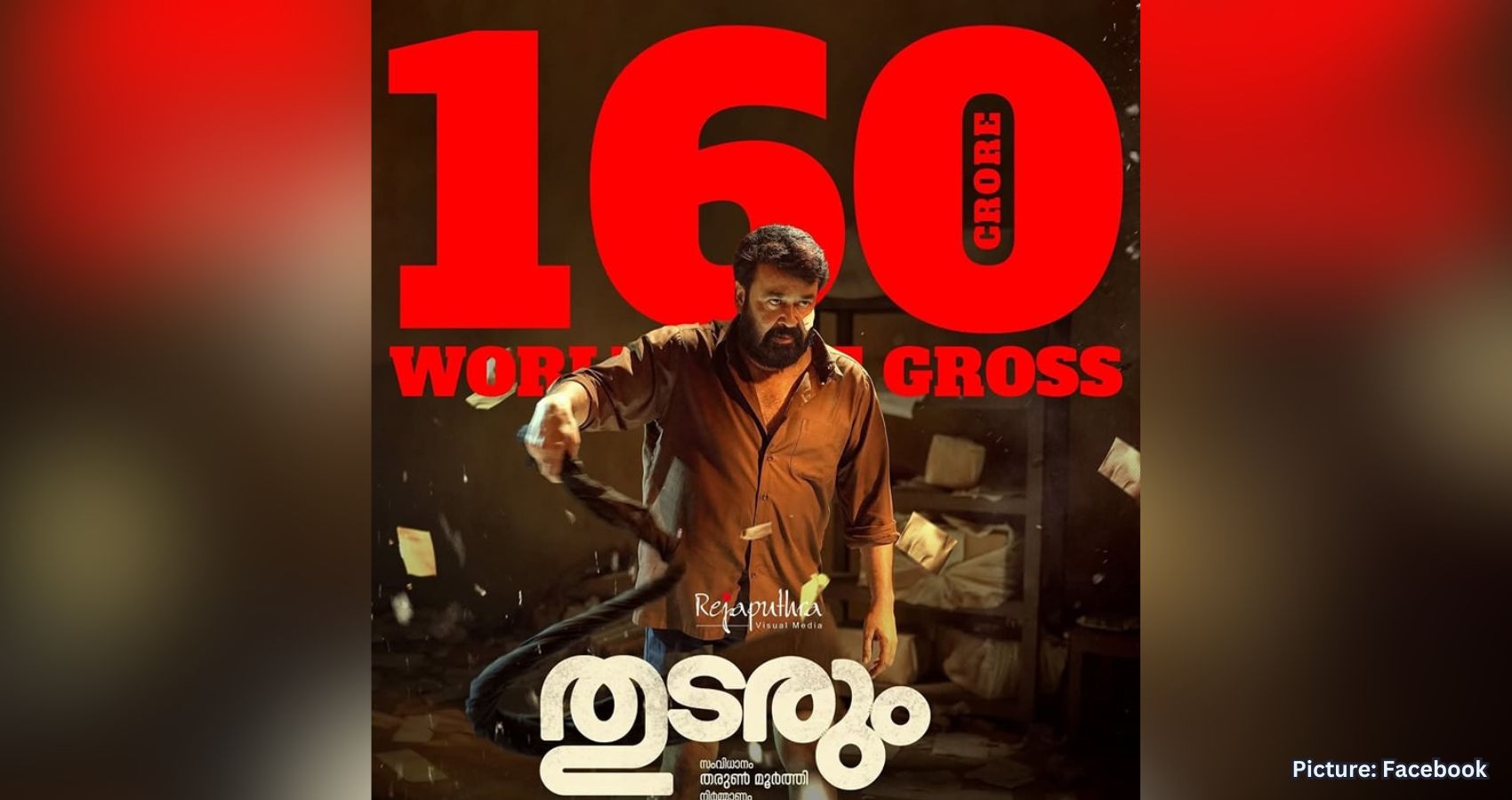
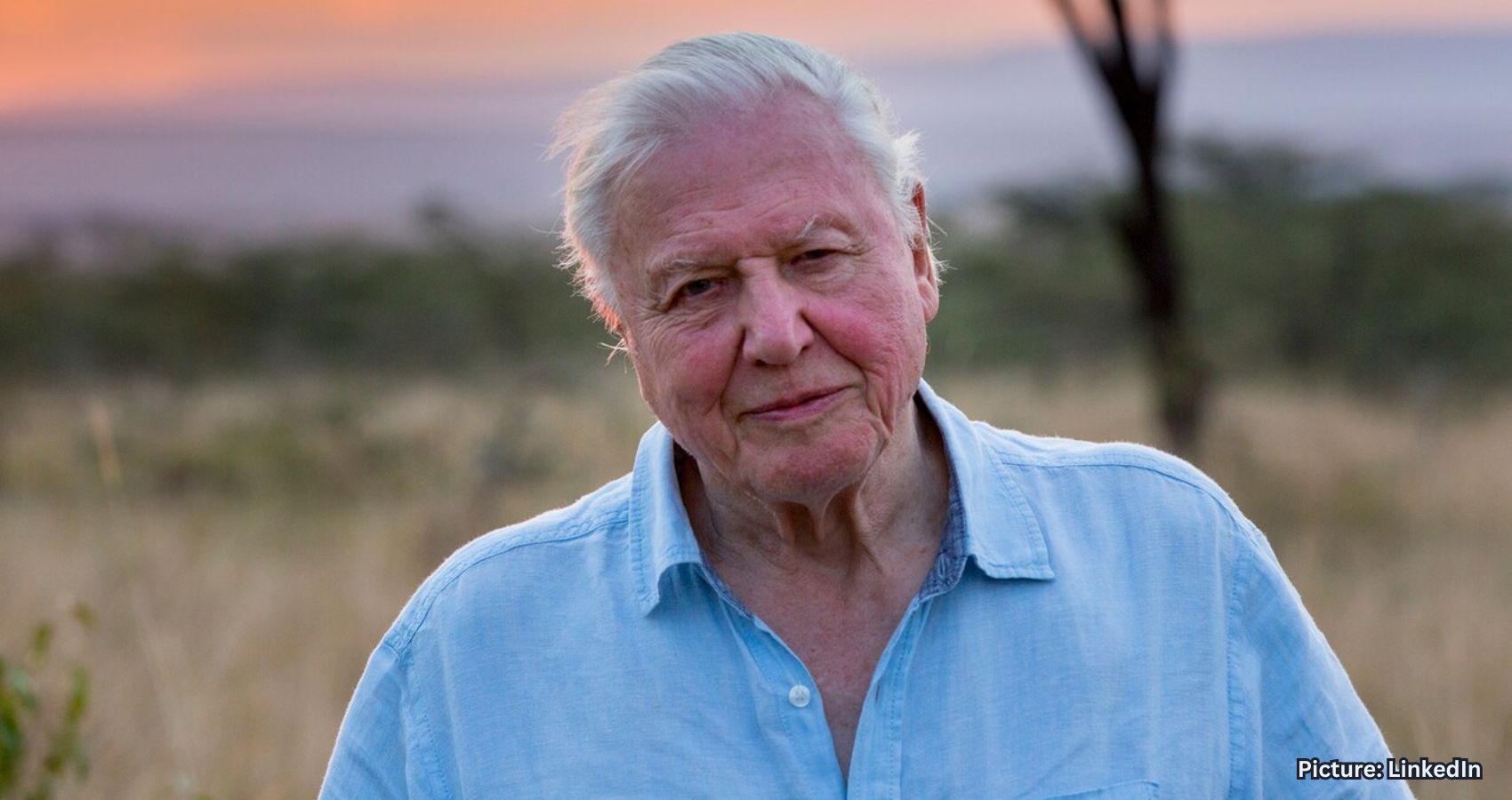




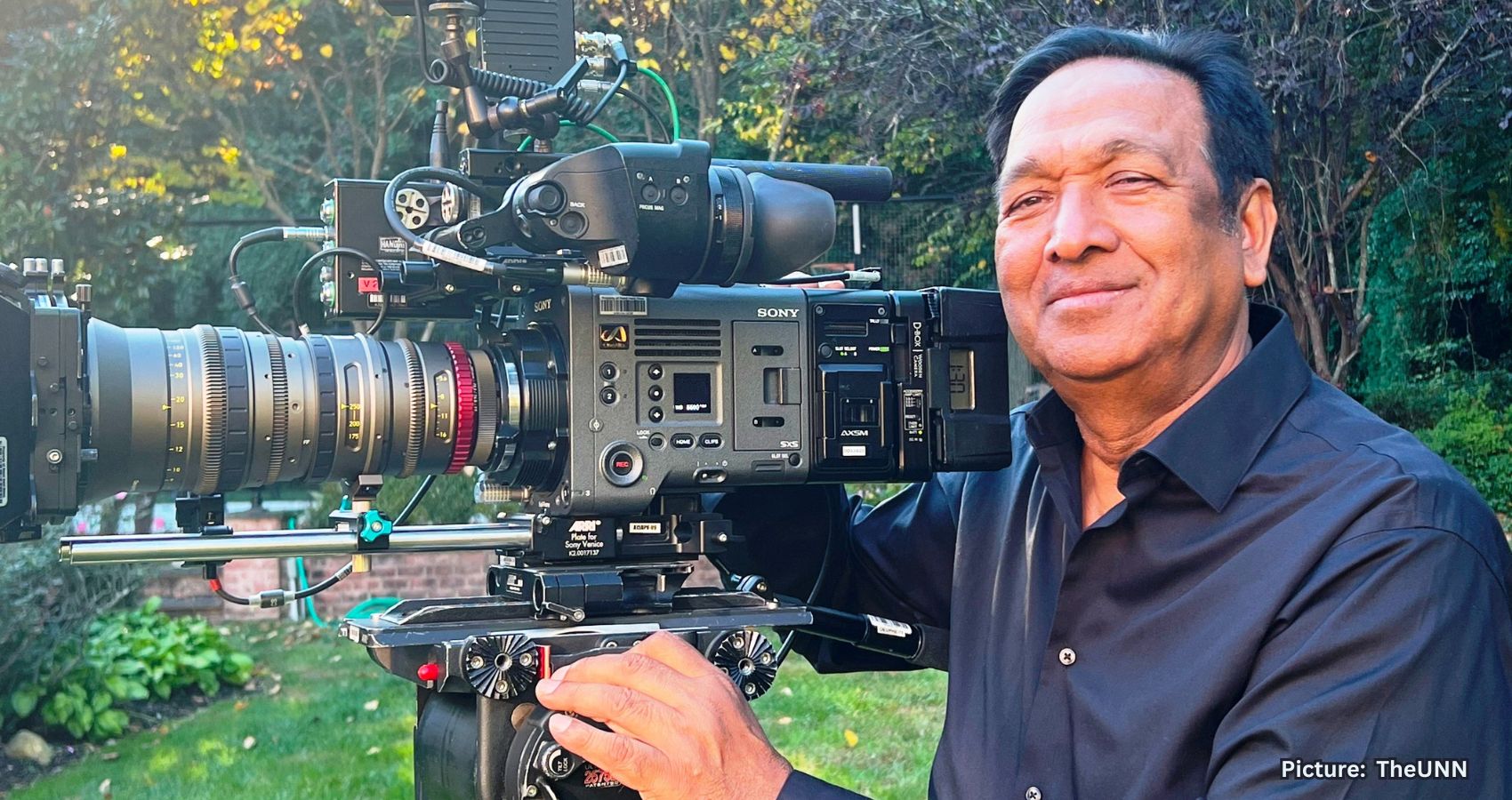

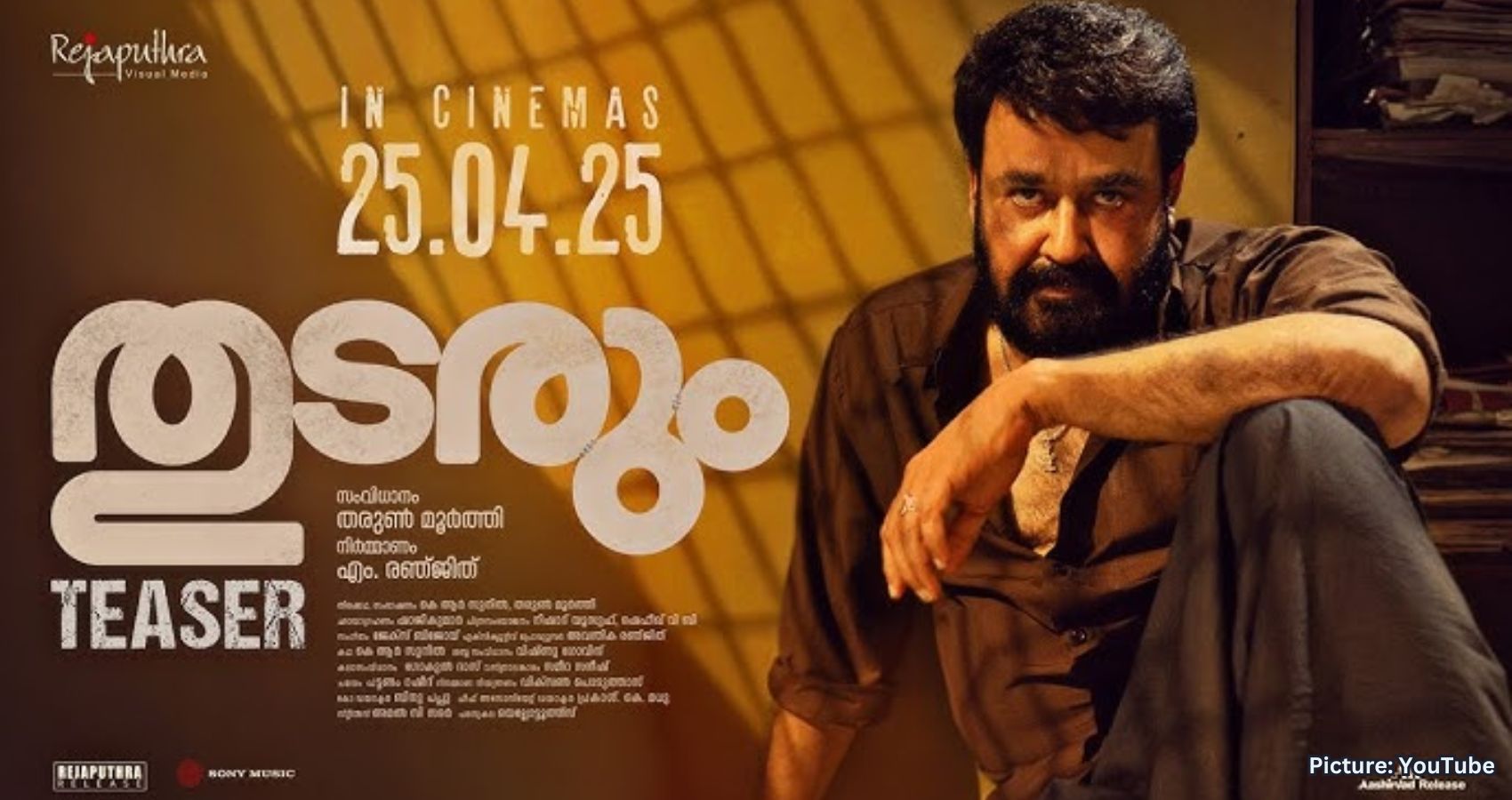























































 On a near-perfect Sunday afternoon a few years ago, walking with Satish Modi the Indian billionaire, philanthropist, and author in the Central Park of Manhattan — that is for many the centre of the universe — we ventured into the heart of the question that has confounded humankind since the beginning of time: The meaning of life and death.
On a near-perfect Sunday afternoon a few years ago, walking with Satish Modi the Indian billionaire, philanthropist, and author in the Central Park of Manhattan — that is for many the centre of the universe — we ventured into the heart of the question that has confounded humankind since the beginning of time: The meaning of life and death. obsessed with prolonging life — eating healthier, training harder, meditating more, doing things to diminish stress — anything to put off the inevitability of death. For quite a few, the topic of death is simply taboo. It is either too morbid or too soon. It’s hardly the go-to topic at family meals, friends’ reunion, business meetings, or at a social outing. Ironically, death is thrust in our faces almost every day — we hear about it on the news, we see it regularly in the movies or read about it in crime thrillers. People we knew have passed on but when it comes to the “everydayness” of death, most of us would rather run a mile than tackle the topic. At the same time, we will all die at some stage. Everyone who is born will die. Nobody is exempt. Death is as much a fact of life as breathing air is to survive. Yet death is awkward to talk about.
obsessed with prolonging life — eating healthier, training harder, meditating more, doing things to diminish stress — anything to put off the inevitability of death. For quite a few, the topic of death is simply taboo. It is either too morbid or too soon. It’s hardly the go-to topic at family meals, friends’ reunion, business meetings, or at a social outing. Ironically, death is thrust in our faces almost every day — we hear about it on the news, we see it regularly in the movies or read about it in crime thrillers. People we knew have passed on but when it comes to the “everydayness” of death, most of us would rather run a mile than tackle the topic. At the same time, we will all die at some stage. Everyone who is born will die. Nobody is exempt. Death is as much a fact of life as breathing air is to survive. Yet death is awkward to talk about.